Healthcare providers can enhance workforce development through this Talent Development in Healthcare Training. This course explores the strategic role of talent development in driving organizational success. Also, participants will learn key competencies required for healthcare roles and how internal and external factors impact employee performance. By understanding these elements, healthcare professionals can strengthen their teams, improve retention, and ensure high-quality patient care.
What You Will Learn:
Key competencies required for healthcare roles
Internal and external factors that affect healthcare employee performance
Details:
Course length: 45 minutes; CME: 0.75
Languages: American English
Key features: Audio narration, learning activity, and post-assessment.
American Medical Compliance is accredited by the Accreditation Council for Continuing Medical Education (ACCME) to provide continuing medical education to physicians. Our Continuing Medical Education (CME) program is committed to enhancing the knowledge, skills, and professional performance of healthcare providers to improve patient care outcomes. Through high-quality educational activities, we aim to address the identified educational gaps and to support the continuous professional development of our medical community. American Medical Compliance designates this activity for a maximum of 0.75 AMA PRA Category 1 Credits. Physicians should only claim this credit for their complete participation in this activity.
Get Certified
American Medical Compliance (AMC) is a leader in the industry for compliance, Billing, and HR solutions. To become certified, please visit us at: American Medical Compliance (AMC).
Reach out for other courses by visiting the AMC Course Library.
Identifying Talent
Talent Management exists to ensure that organizations get the right people with the right skills into the right position at the right time so an agency can accomplish its mission.
Similarly, locating, recruiting, hiring, and developing the best talent is crucial, not just to support agency strategic planning, but to contribute to a thriving, sustained Performance Culture in the Federal workforce.
Talent Management: A system that promotes a high-performing workforce, identifies and closes skills gaps, and implements and maintains programs to attract, acquire, develop, promote, and retain quality and diverse talent.
Healthcare providers can enhance workforce planning through this course. It specifically emphasizes the role of talent management in placing the right people in the right roles at the right time. Moreover, participants will explore how talent management actively supports strategic planning, builds a strong workforce, and sustains a culture of excellence. By effectively identifying skill gaps and applying strategies to attract, develop, and retain top talent, organizations can significantly boost performance, ultimately enhancing patient care and ensuring long-term success.
Developing Skills and Competencies
A competency is a measurable pattern of knowledge, skills, abilities, behaviors, and other characteristics that an individual needs to perform work roles or occupational functions successfully.
Competencies specify the “how” of performing job tasks, or what the person needs to do the job successfully. Competencies are used for:
- Assessing and selecting candidates for a job
- Assessing and managing employee performance
- Workforce planning; and
- Employee training and development.
Furthermore, healthcare providers can boost workforce effectiveness through this training. It explains how competencies—measurable patterns of knowledge, skills, and behaviors—ensure job success. Participants will learn to use competencies for hiring, performance management, workforce planning, and training. By applying these strategies, organizations can enhance performance, increase efficiency, and improve patient care.
Coaching and Mentoring
Despite the enormous effort companies dedicate to talent development, many find that their pipeline of employees ready to assume key positions is insufficient as their organizations expand and grow. Those organizations who are successful in developing their talent tend to focus in three main areas:
- A defined process for talent selection and leadership development, which supports strategic business and human capital objectives.
- A culture where employees feel emotionally engaged with their work and want to remain, learn, and grow.
A demonstrated commitment to develop, support and advise individuals through coaching and mentoring, thereby ensuring a continuous process of development, feedback, and positive learning energy focused on employees.
Today companies are turning to coaching and mentoring programs to develop talent. These programs harness the value of internal employee resources to develop others, which saves time, cost, and increases overall employee satisfaction. In fact, 71% of Fortune 500 companies offer mentoring to their employees.
Ultimately, healthcare providers can strengthen workforce development with this training. This course also explains why many organizations lack ready talent and how successful ones build strong pipelines. Participants will discover how structured hiring, an engaging culture, and coaching drive growth. By applying these strategies, healthcare organizations can save time, reduce costs, and boost employee satisfaction, leading to better patient care and success.
Diversity and Inclusion
Here are some tangible strategies to ensure diversity and inclusion in your organization:
Ensure that diversity and inclusion is ingrained within the culture by making it integral to the mission and outputs within the organization.
In addition to this, integrate stakeholders from all levels of the organization and ensure that all groups are included in discussions to enact and maintain diversity and inclusion efforts.
Another strategy is to share successes and failures with similar organizations as it is this discourse that will allow the organization to reflect on strengths and weaknesses in previous diversity and inclusion strategies.
Healthcare providers can foster diversity and inclusion through this training. It teaches strategies to embed diversity in organizational culture, engage stakeholders, and involve all groups in inclusion efforts. Participants also learn to share successes and challenges with similar organizations to refine strategies. By applying these approaches, teams can build an inclusive workplace that boosts collaboration, innovation, and patient care.



